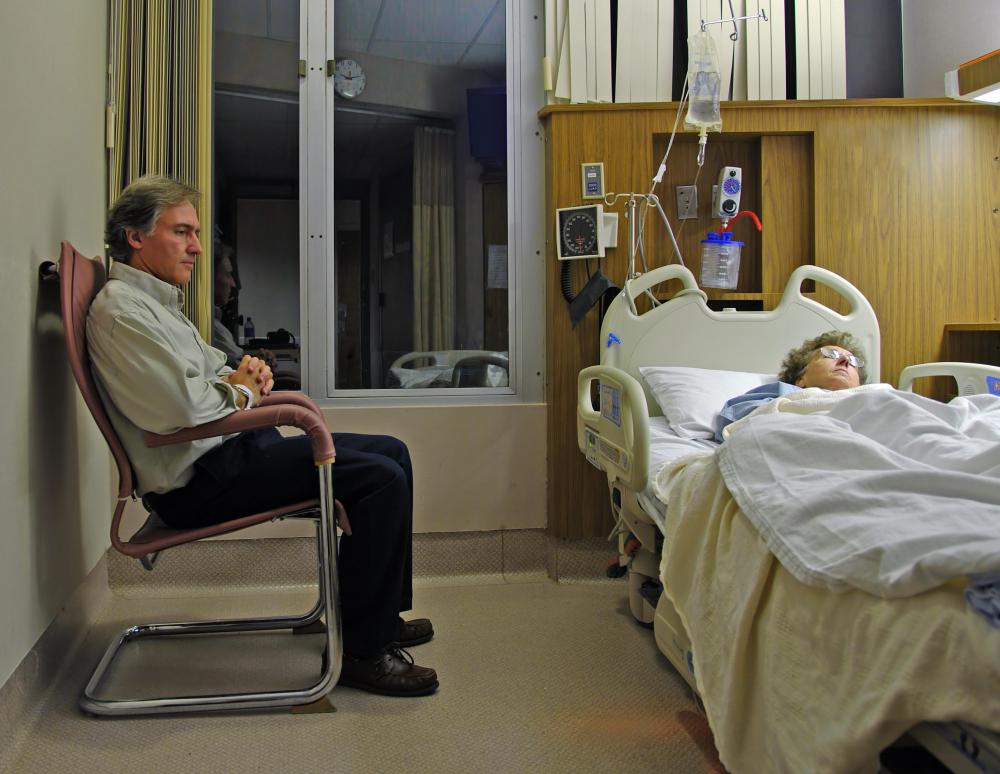At WiseGEEK, we're committed to delivering accurate, trustworthy information. Our expert-authored content is rigorously fact-checked and sourced from credible authorities. Discover how we uphold the highest standards in providing you with reliable knowledge.
What is Hypernatremia?
When people are diagnosed with hypernatremia it means they have very high levels of sodium in their body that aren’t being adequately counterbalanced by the right amount of fluid. This condition can be caused suddenly, especially in people who are in extreme athletic events or over a day or two if sudden abdominal illness occurs. Alternately, it might happen a little at a time if folks aren’t getting enough fluids, and especially if they have any type of condition where the kidneys are not creating balance and are releasing too much fluid.
A few key conditions are associated with hypernatremia. Violent stomach flu where people are vomiting or have diarrhea without being able to keep anything down might cause this imbalance. Since it can more readily and quickly occur in the very young or the elderly, those with stomach bugs do need careful vigilance if they’re ill. Certain forms of diabetes where the kidneys are not functioning as well and cause large and frequent amounts of urination is another potential cause of hypernatremia. Moreover, sometimes neglect of health leads people not to drink enough, and they get high sodium levels as their bodies dehydrate.

The early symptoms of hypernatremia include fatigue and confusion, and some people may suffer dry mouth or thirst because they're not getting enough to drink. Muscle spasms or twitching of the body may occur too. When ignored, high sodium levels become a serious danger. Greater confusion may result and people can go into a coma. Left untreated, coma is likely to progress to death.

Fortunately, the initial symptoms of hypernatremia are pretty difficult to ignore. When recognized, people should get immediate medical care. Treatment is usually extremely successful and involves rehydrating the body with fluids, usually via intravenous line. If this not available, oral rehydration solution could be used in its place, though method of delivery is much more labor intensive.

While treating hypernatremia symptoms is important, it may not be the only treatment needed for some people. Those who have undiagnosed forms of diabetes that have caused excessive urination could need to start treatment so the condition does not occur again. Sadly, this condition does sometimes recur when people are older, living alone and not really taking proper care of the self. Several occurrences of hypernatremia might suggest a person is not able to continue to live alone and decisions might need to be made about a more supportive care environment.

For those interested in hypernatremia, the opposite of this is hyponatremia. It usually occurs when sodium levels are well below normal because the body receives too much fluid or is unable to excrete fluid in proper amounts. Interestingly, athletes can be prone to both conditions. They may sweat so much during physical exertion that they lose too much fluid, and don’t adequately replace it. Alternately, they may over-replace fluids, creating hyponatremia. Both conditions typically call for intravenous treatment to restore sodium/fluid balance.
AS FEATURED ON:
AS FEATURED ON:















Discuss this Article
Post your comments